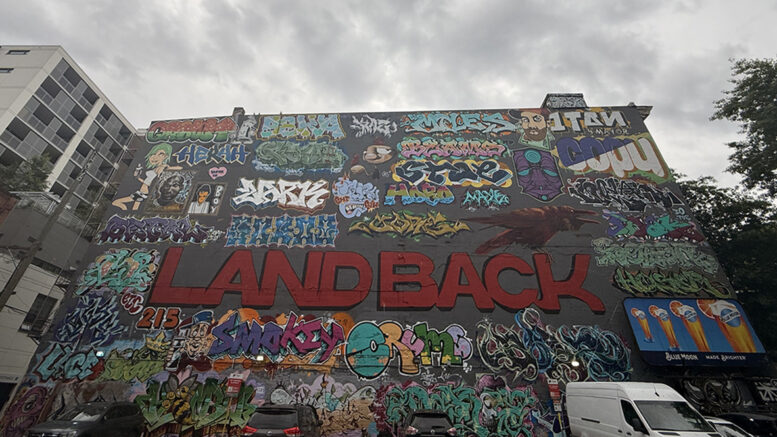By John Wirth
(ANNews) – In Vancouver’s Downtown Eastside (DTES), Indigenous people make up a disproportionate share of the unhoused population – a direct result of colonial dispossession, poverty, and systemic neglect. Now, a new policy from Mayor Ken Sim’s municipal government threatens to deepen this crisis.
In February, Vancouver city council voted to freeze the construction of new supportive housing. The decision, led by Sim and his ABC Vancouver party, halts the development of units meant for people experiencing or at risk of homelessness. Sim argued that Vancouver already provides 77 per cent of Metro Vancouver’s supportive services while housing only 25 per cent of the region’s population, claiming a pause is needed to “renew aging stock.”
But for many Indigenous advocates and housing organizers, the mayor’s math is a smokescreen.
The move exposed divisions at city hall. Councillors Pete Fry, Lisa Dominato, and independent Rebecca Bligh opposed the freeze. Bligh, ousted from ABC for resisting similar cuts, had called for provincial consultation – a move many see as clashing with the mayor’s top-down style.
Adding to concerns is Sim’s push to dissolve Vancouver’s elected park board – despite ABC’s sweep of city council, school board, and park board seats in 2022. Critics see this as a consolidation of power that mirrors his handling of the housing file.
Sim insists his government wants to “address the root causes of homelessness.” Yet his actions suggest otherwise. While invoking provincial and federal responsibility, his policies freeze funding streams and delay badly needed construction – passing the buck in a bureaucratic game of hot potato.
As the City of Vancouver halts new supportive housing, Nonprofit-organization is scaling up. CityReach Care Society executive director Simon Gau is leading efforts to prevent homelessness before it begins; prevention, not pause, should be focused.
“We’ve just entered our second year of federal funding through the Reaching Home initiative – around $400,000 to help prevent homelessness before it starts,” Gau explains. “Our goal is to reverse-engineer homelessness by identifying individuals and families at risk, building relationships, and giving them tools to remain housed.”
Simon shared that CityReach is expanding its services through “The Hope project” which “is an extension of our Club Freedom program, which already connects with vulnerable populations by providing hot meals, spiritual care, street outreach, and prison outreach.” The organization plans to demonstrate the impact of its current federal funding by exceeding expectations and using the results to advocate for increased funding and program expansion.
But it begs a question, where is the municipal funding if this is a proven effective program that efficiently offloads government responsibility?
Echoes of Colonial Urban Policy
The freeze comes amid renewed scrutiny of how municipal governments perpetuate the legacy of Indigenous displacement – not just in rural land seizures, but through urban renewal agendas.
Jean Barman’s seminal article Erasing Indigenous Indigeneity in Vancouver traces how 19th-century development efforts targeted Indigenous settlements near False Creek, often under moralizing claims about “drunkenness” and disorder. Today’s language may be less overt, but the message remains. Sim has described DTES single-room occupancy buildings as “crumbling,” “unlivable,” and “infested,” justifying intervention not with compassion but condemnation.
Sim’s latest proposal – a “re-unification roundtable” to help relocate Indigenous residents to their home nations – is framed as a healing initiative. But Indigenous critics warn it could become a modern rebranding of removal.
“Health outcomes are better when you are in your community,” Sim has said, pledging you don’t have to leave if you don’t want to; yet, your consent is manufactured. Still, the optics of moving Indigenous people out of a gentrifying urban core ring familiar.
As Barman noted, settler officials once rationalized displacement with the belief that Indigenous people could simply be relocated to a “just as convenient” space. These rationalizations haven’t disappeared – they’ve just changed their packaging.
A Haunting Familiar to Alberta
The story unfolding in Vancouver resonates deeply with Indigenous communities in Alberta. In Edmonton, urban development has repeatedly clashed with encampments set up by unhoused residents – many of them Indigenous. In Calgary, the Beltline and East Village have seen Indigenous residents pushed out by condo projects and commercial rezoning.
Amber Dean, writing in The West and Beyond, calls these areas “haunted” by colonial logic. The DTES – and by extension, similar districts across the country – are frequently framed as both overcrowded and empty, dangerous yet disposable. This “frontier logic,” a term coined by legal geographer Nicholas Blomley, equates poverty with waste and vacancy – making removal seem not just rational, but necessary.
This language masks the lived realities of Indigenous people who remain rooted in place despite generations of exclusion. It sanitizes policy and rebrands displacement as “revitalization.”
Who Belongs in the City?
Sim’s approach – pausing housing, sidelining dissent, and floating voluntary relocation – reflects a broader question: who gets to belong in cities like Vancouver, Edmonton, or Calgary?
In the past, cities erased Indigenous presence through overt policy. Today, displacement occurs through more subtle tools: rezoning, housing freezes, and political messaging that casts social responsibility as a burden.
Unless these policies are challenged, they will continue to treat Indigenous people as temporary guests in their own territories – instead of the permanent, self-determining communities they are.
John Wirth is a Local Journalism Initiative Reporter. He is a Cree journalist and contributor to Alberta Native News, reporting on Indigenous policy, displacement, and urban sovereignty.



Be the first to comment on "Vancouver’s Housing Freeze Draws Fire from Indigenous rights advocates. "